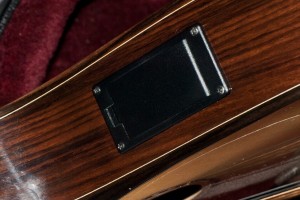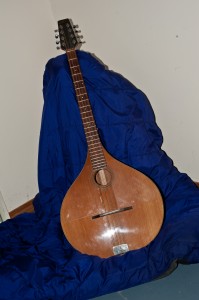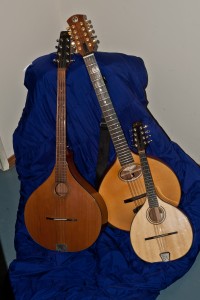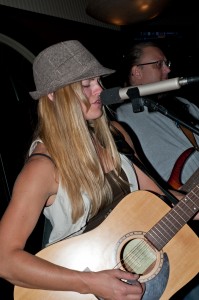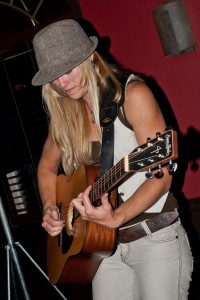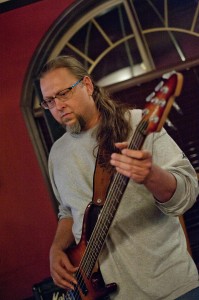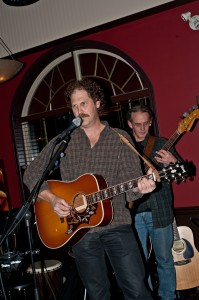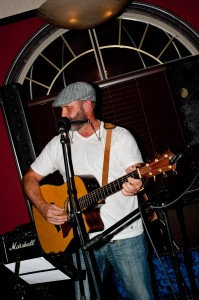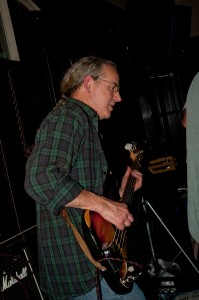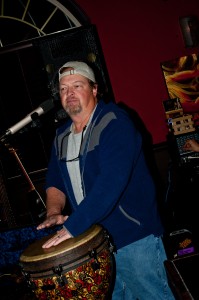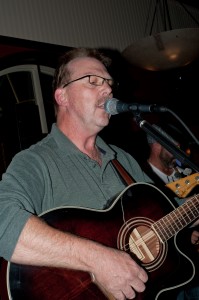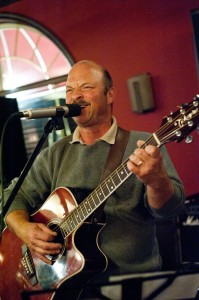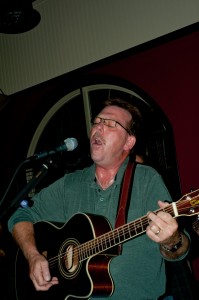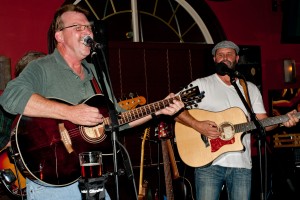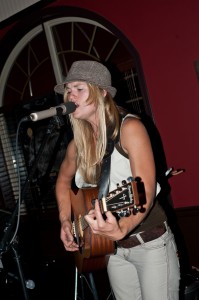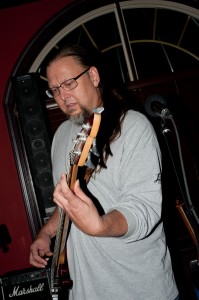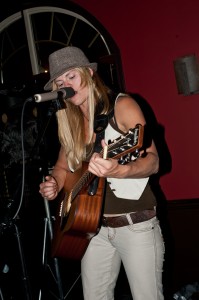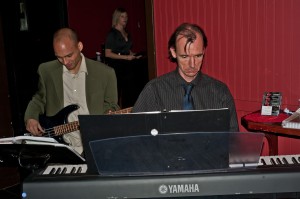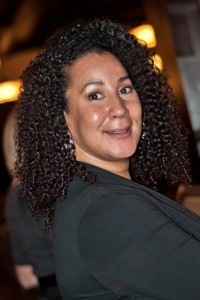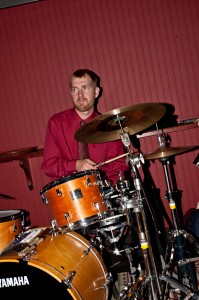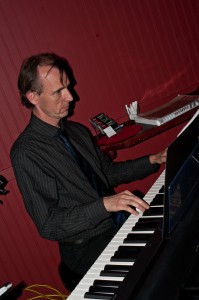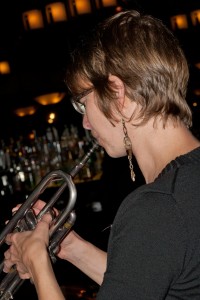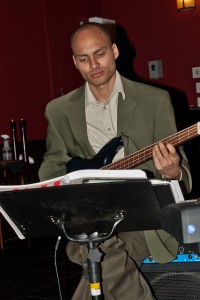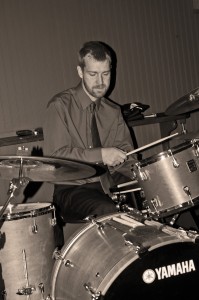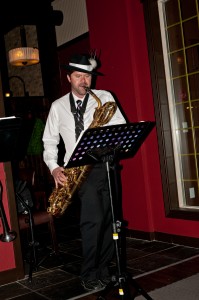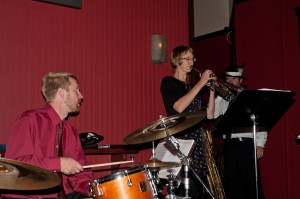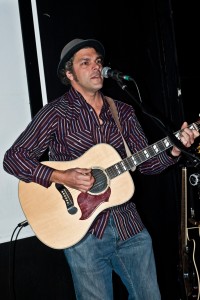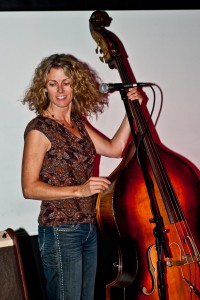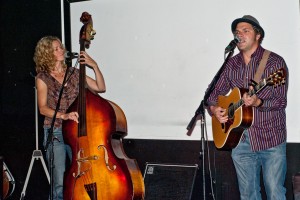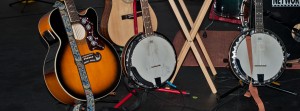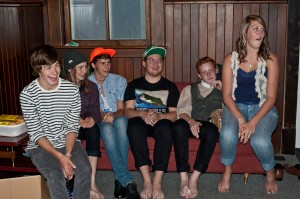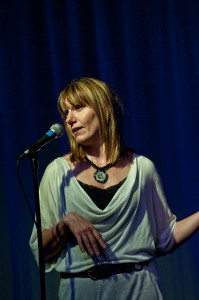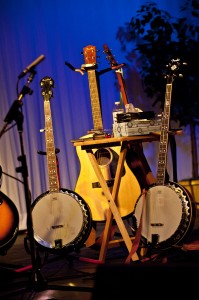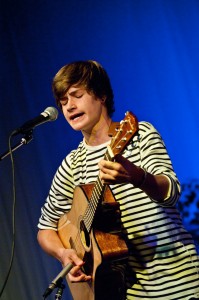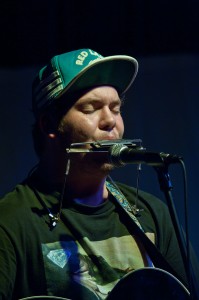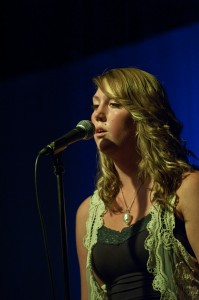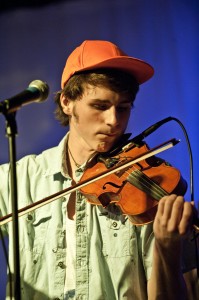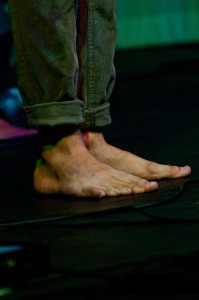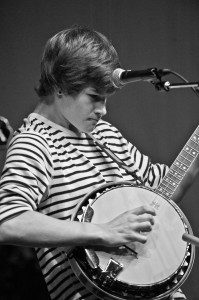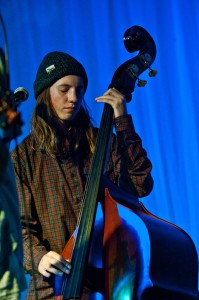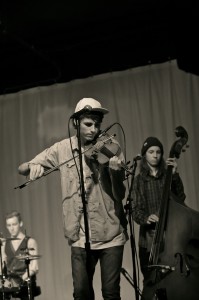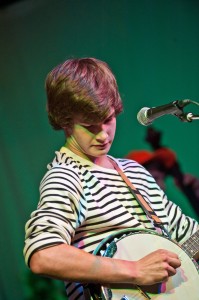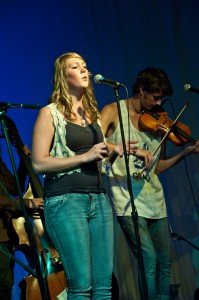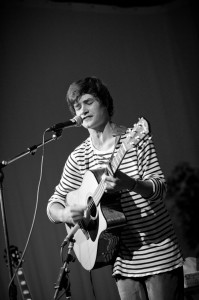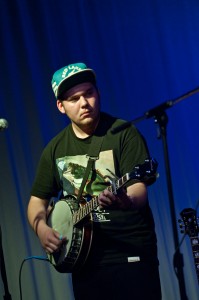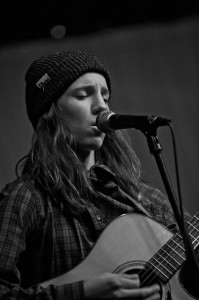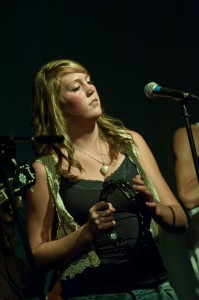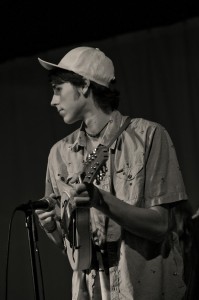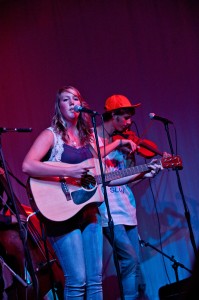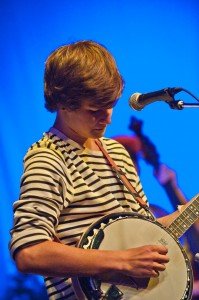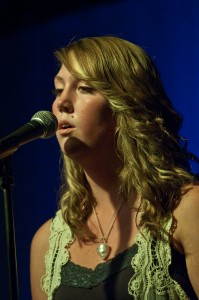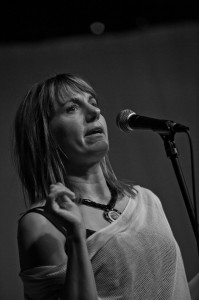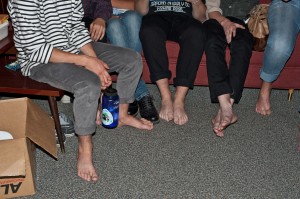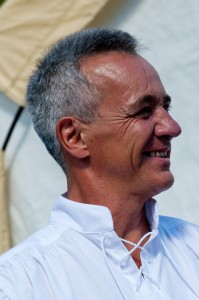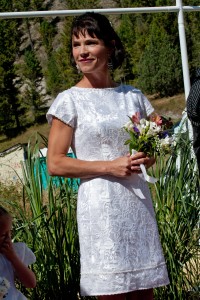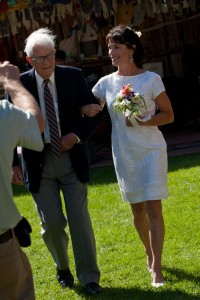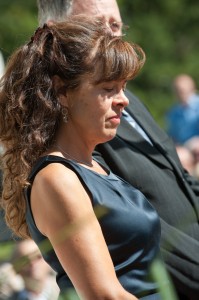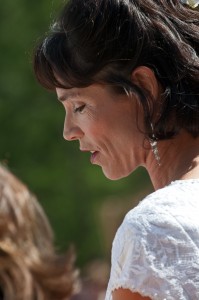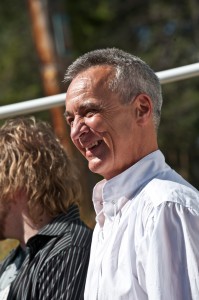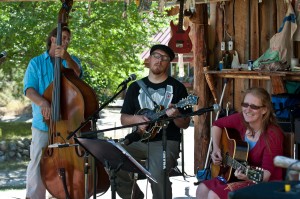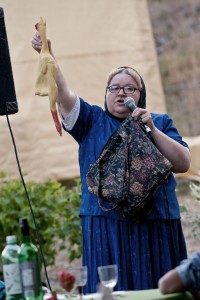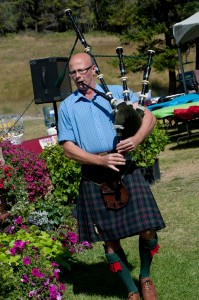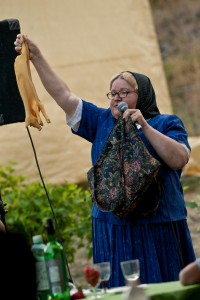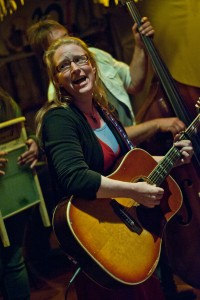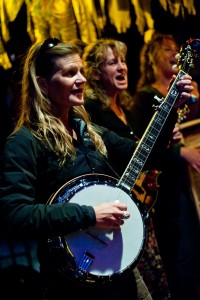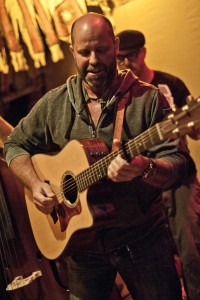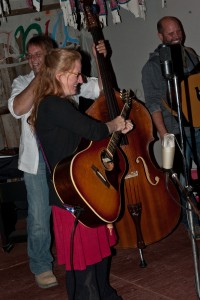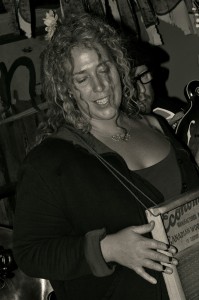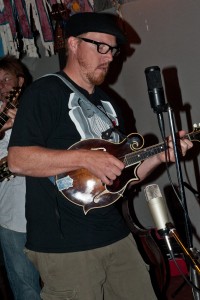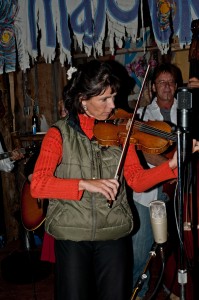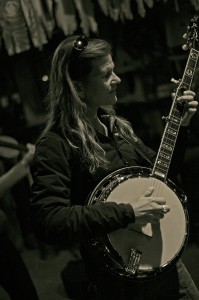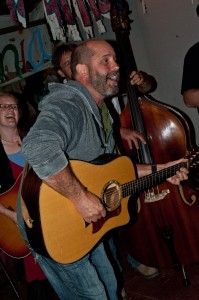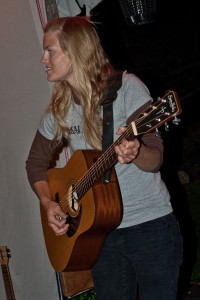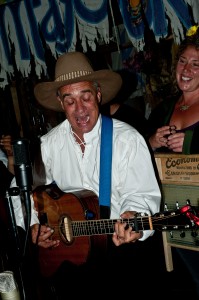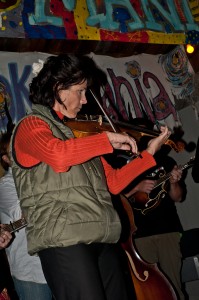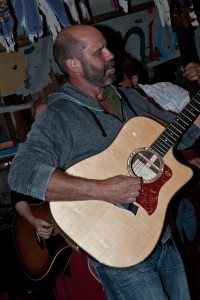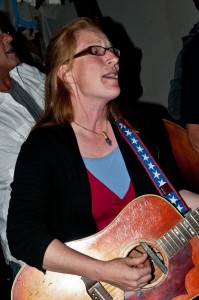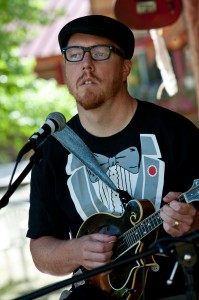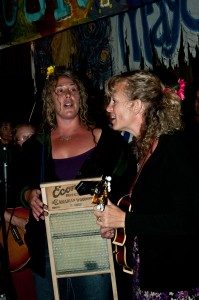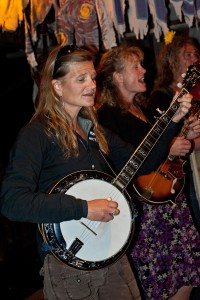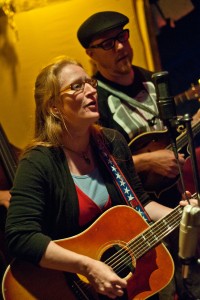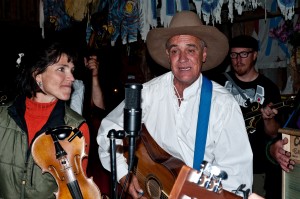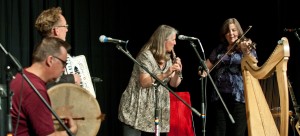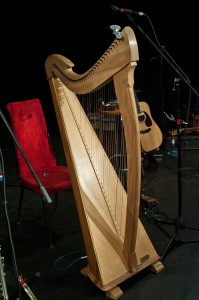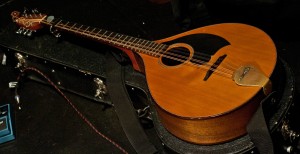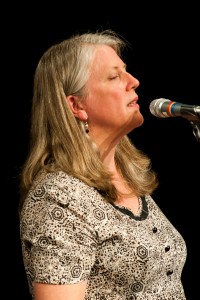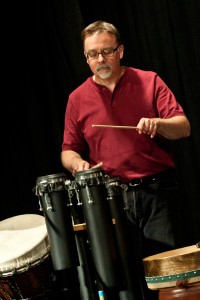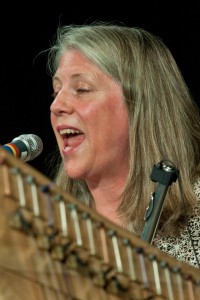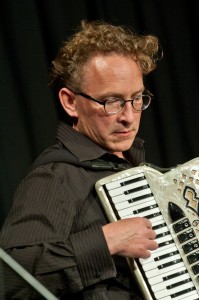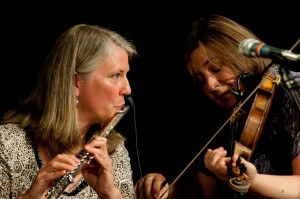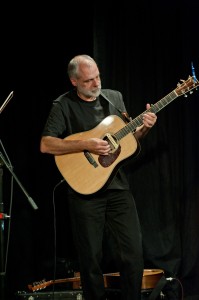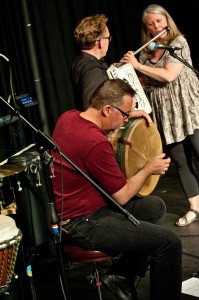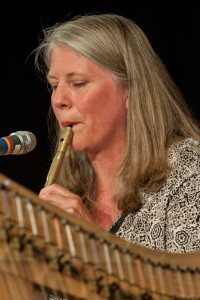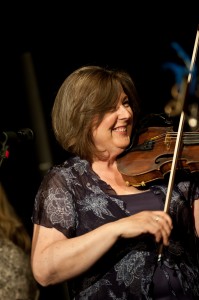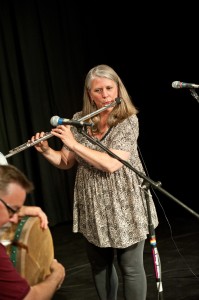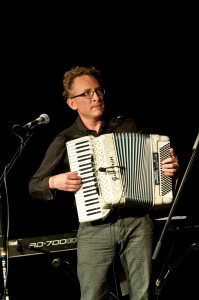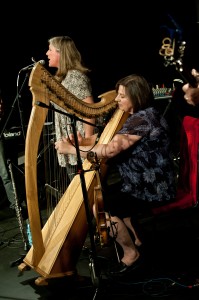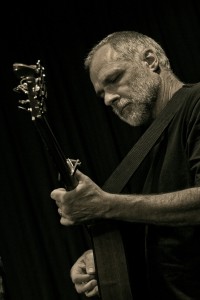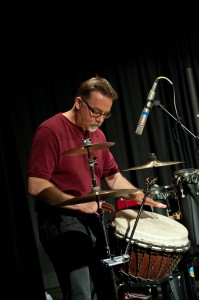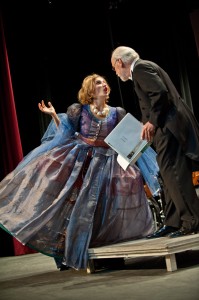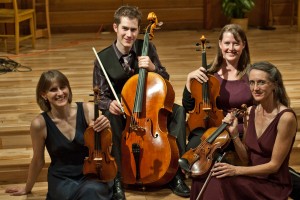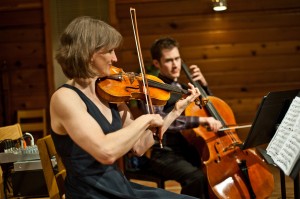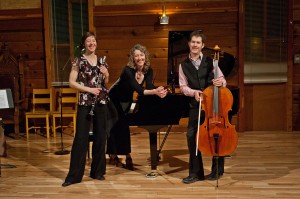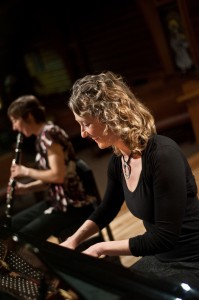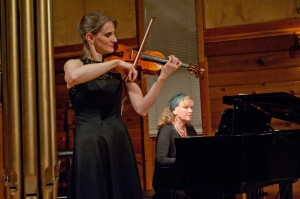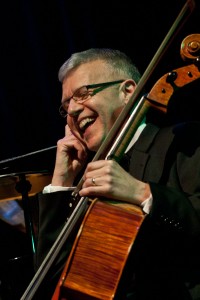Recently Tom Bungay and Gene Anderson (The East-West Connection) were invited to 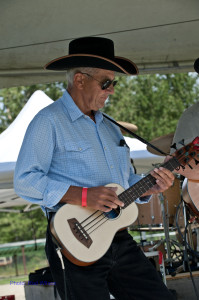 perform at a recent outdoor event in the Kimberley Platzl. While they were kicking back and taking in the sights Gene, who is a bass player, noted that he could hear a bass but couldn’t see one in the group performing. He was right. There were bass lines riding in the band without a bass in sight. Larry Tuck of Tuck’s Troubadours, for a number of reasons, had forsaken his bass guitar for a Bass Ukulele. He is the first, and only musician that I know of in this area, who has gone down that route. I suspect he will not be the last to take on this light weight alternative to the bass guitar. Below is a review of the Karla U-Bass by Greg Olwell. I have lifted this from the most recent edition of Acoustic Guitar.
perform at a recent outdoor event in the Kimberley Platzl. While they were kicking back and taking in the sights Gene, who is a bass player, noted that he could hear a bass but couldn’t see one in the group performing. He was right. There were bass lines riding in the band without a bass in sight. Larry Tuck of Tuck’s Troubadours, for a number of reasons, had forsaken his bass guitar for a Bass Ukulele. He is the first, and only musician that I know of in this area, who has gone down that route. I suspect he will not be the last to take on this light weight alternative to the bass guitar. Below is a review of the Karla U-Bass by Greg Olwell. I have lifted this from the most recent edition of Acoustic Guitar.
“Sometimes you show up for a picking session and you’re out of luck. There are already too many guitarists and you don’t want to add another six-string to the party, but hey look, nobody’s playing bass! Or, maybe your home recordings need some low end and you want an easy-to-play bass with a big sound. If this sounds familiar, the U-Bass from the ukulele specialists at Kala Brand may be just what you need. With its small size, the U-Bass is easy to carry and play, and when played through an amp, produces a big bass sound.
With its small body, ultrashort 21-inch scale (compared to a typical Fender-style bass’s 34-inch scale), and thundering plugged-in bass sound, the U-Bass defies all sense of proportion. However, spend a little time with one and you may quickly find that the U-Bass moves past “brain-warping novelty bass” to become an inviting instrument that could be a very useful and inspiring tool. Kala has an extensive line of U-Basses, with different woods and body shapes (traditional, cutaways, and solid bodies), as well as fretless versions. We checked out the entry-level U-Bass-SMHG – Mahogany, Baritone-Uke Size Body
Though Kala never refers to this instrument as a “ukulele bass,” coming from a company that is one of the biggest players riding the current wave of ukulele mania, it’s hard to think of this instrument any other way. Roughly the size of a baritone ukulele, the U-Bass has a slightly longer neck (a 21-inch scale versus a baritone uke’s 19-inch scale), and the mahogany neck, with 12 frets to the body, is stout, feeling much more like a full-size bass guitar neck than that of a ukulele.
The U-Bass’s body is built with a solid flamed mahogany top and solid mahogany back and sides. The top and back are bound with tortoiseshell-color plastic and the sound hole is ringed by a simple white rosette. The frets were nicely dressed, never causing a buzz and free of sharp edges. One of the U-Bass’s unusual features is the small hatch on the back, directly behind the bridge area, which allows the instrument’s unique rubber strings to be fed through the top and bridge.
To amplify the U-Bass, Kala chose Shadow electronics, consisting of a Nanoflex under saddle pickup and small preamp mounted on the bass’s side, with a chromatic tuner and controls for volume and tone. The preamp is powered by a pair of CR2032 button batteries, which are loaded through a small sliding compartment near the standard end pin jack.
Unique Strings: The heart of the U-Bass’s one-of-a-kind feel and sound is its strings. Thick and stretchy like gummy worms, the U-Bass’s polyurethane strings have a smooth, slick texture and are a nice evolution from the sticky silicone strings used on the U-Bass’s ancestor, the Ashbory Bass, a minuscule bass sold by Guild and later DeArmond. The strings’ elasticity, low tension, and super thick gauges are key to the bass’s gloriously thuddy sound, but the very same qualities that yield a convincing upright bass sound also require frequent tuning. They’re just so stretchy and roly-poly under your fingers that changes in temperature or humidity, or enthusiastic playing, can knock them out of tune faster than you might be accustomed to with steel strings. So, I appreciated the high-quality Hipshot Ultralite tuning machines, on board tuner, and Graph Tech nut for making tuning easy. Though the U-Bass comes with a Graph Tech nut, which should help the strings slide smoothly across the nut during tuning, I took the additional step of equalizing the tension on either side of the nut by gently lifting the strings slightly above the nut. I found this helped cut down on intonation changes during playing.Thanks to its size, guitarists might have an easy time adapting to this small bass. The spacing is tighter than a typical guitar, but it feels friendly and was easy to get used to. The neck shape felt familiar, too, and made playing for extended periods comfortable.
Little Bass, Big Boom: With its tiny body and big, flappy strings, the U-Bass has an acoustic volume that’s fine for plucking at home, but it probably won’t be loud enough to compete with most other acoustic instruments. You’ll need an amp for that and when you plug in, you’ll find that the bass’s real strength is its plugged-in sound. At low volumes, you’re probably fine playing through a standard acoustic amp, though higher levels would benefit from a dedicated bass amp. I played the U-Bass through Fender Bassman TV and SWR Baby Blue bass amps at a few rehearsals with my jazz big band and experienced a bit of cognitive dissonance: the plugged-in sound from this laughably small bass was as authoritative as James Earl Jones’s voice. When I switched from amplified upright bass to the U-Bass during our louder, more rocking songs, the sound from the little bass was nothing short of thunderous. Even plugged into my amp’s active input, which attenuates some input signal, the Shadow pickup’s output was tremendous, requiring me to lower my amp’s volume from the upright’s setting. The U-Bass had some of the most delicious, no-nonsense fundamental bass tone imaginable. Even with the onboard electronics’ tone control turned up to its most treble-heavy setting, the tone was pure, thick fundamental, nearly free of all the upper-end information acoustic guitarists crave for a sparkly sound. Instead of creating a lacy, high-end sound, turning the tone control up gave the U-Bass a little more click on the notes’ attack, which helped provide more right-hand detail. But, for my ears, I preferred the onboard tone control down in its lower half, which trims the high-end, much like a tone control does on an electric guitar, leaving a thick, supportive sound. For a bass player, this meat-and-potatoes sound is the foundation you’ll need for most of your bass lines. I also never had a problem with feedback; even when I tried to induce it, the little guy wouldn’t cooperate.
Take It Along: For anyone who needs an acoustic bass, or simply wants to explore the beauty of some low-end sounds, the Kala U-Bass should be high on your list of basses to demo. You won’t need to be in a ukulele band to pull it off either—several top-shelf bassists, like Bakithi Kumalo, Leland Sklar, and Abe Laboriel, have discovered the charm of the U-Bass and use it regularly onstage in a variety of venues. Far beyond novelty, the U-Bass is a real-deal bass, built well to deliver serious thunder. The best part? Its tiny size makes it perfect to carry along with your acoustic guitar gear, in case the jam calls for something besides another guitar.
SPECS: Four-string miniature acoustic bass. Solid mahogany top, back, and sides. Mahogany neck. Rosewood fingerboard and bridge. Graph Tech nut. 21-inch scale. 1 13/16-inch nut width. Matte finish. Hipshot Ultralite tuners. Pahoehoe polyurethane strings. Shadow Nanoflex bridge pickup with SH NFX EQ-T onboard active electronics. Made in China.
PRICE: $660 list/$550 street.
MAKER: Kala Brand Music: (877) 853-3853; kalabrand.com.”
Although in the review the price is listed as $550-$660 a quick search on the internet yielded prices that were significantly under $400. That sounds like a hell of a deal for anyone interested in experimenting with the instrument.
Check the YouTube video in the on-line review Karla U-Bass
@@@@@@@@@@@@@@@@@@
2013/05/21 – this just in – Mike and Anie Hepher at the CLAWHAMMER GALLERY are now an official Kala dealer so they can get that bass uke and any other uke gear in. They stock about 6-10 ukes at any given time. as well as accessories like straps and strings and tuners. Thanks for the info Mike.
@@@@@@@@@@@@@@@@@@

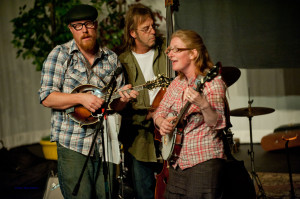
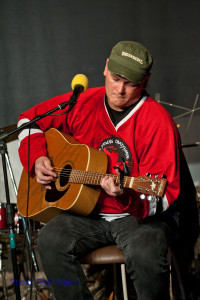
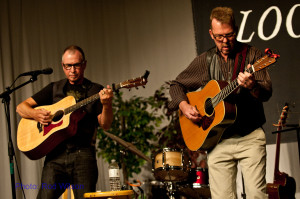
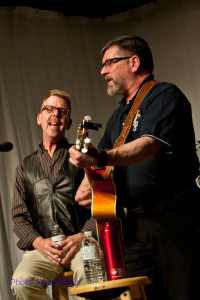
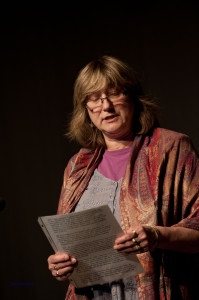
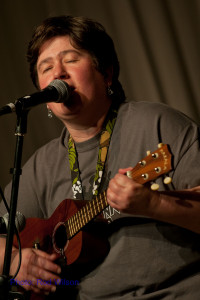
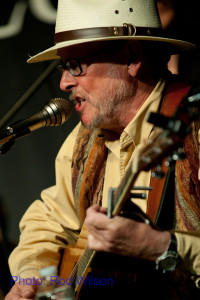
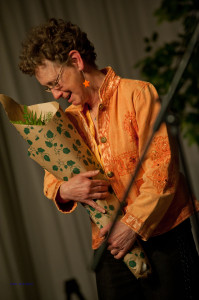
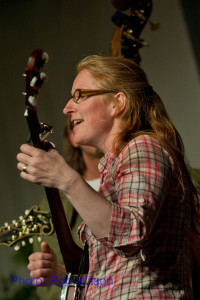
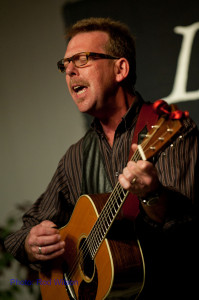
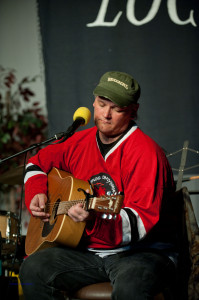
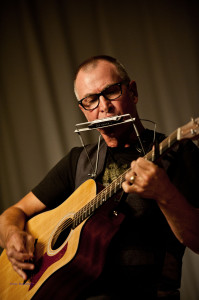
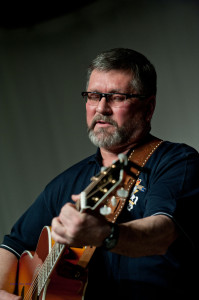
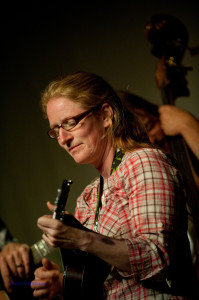
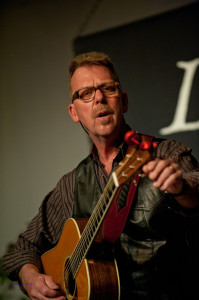
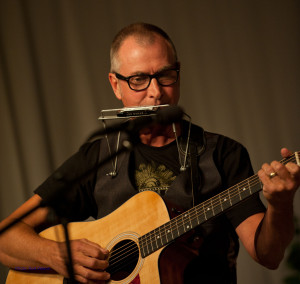
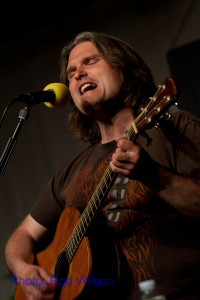
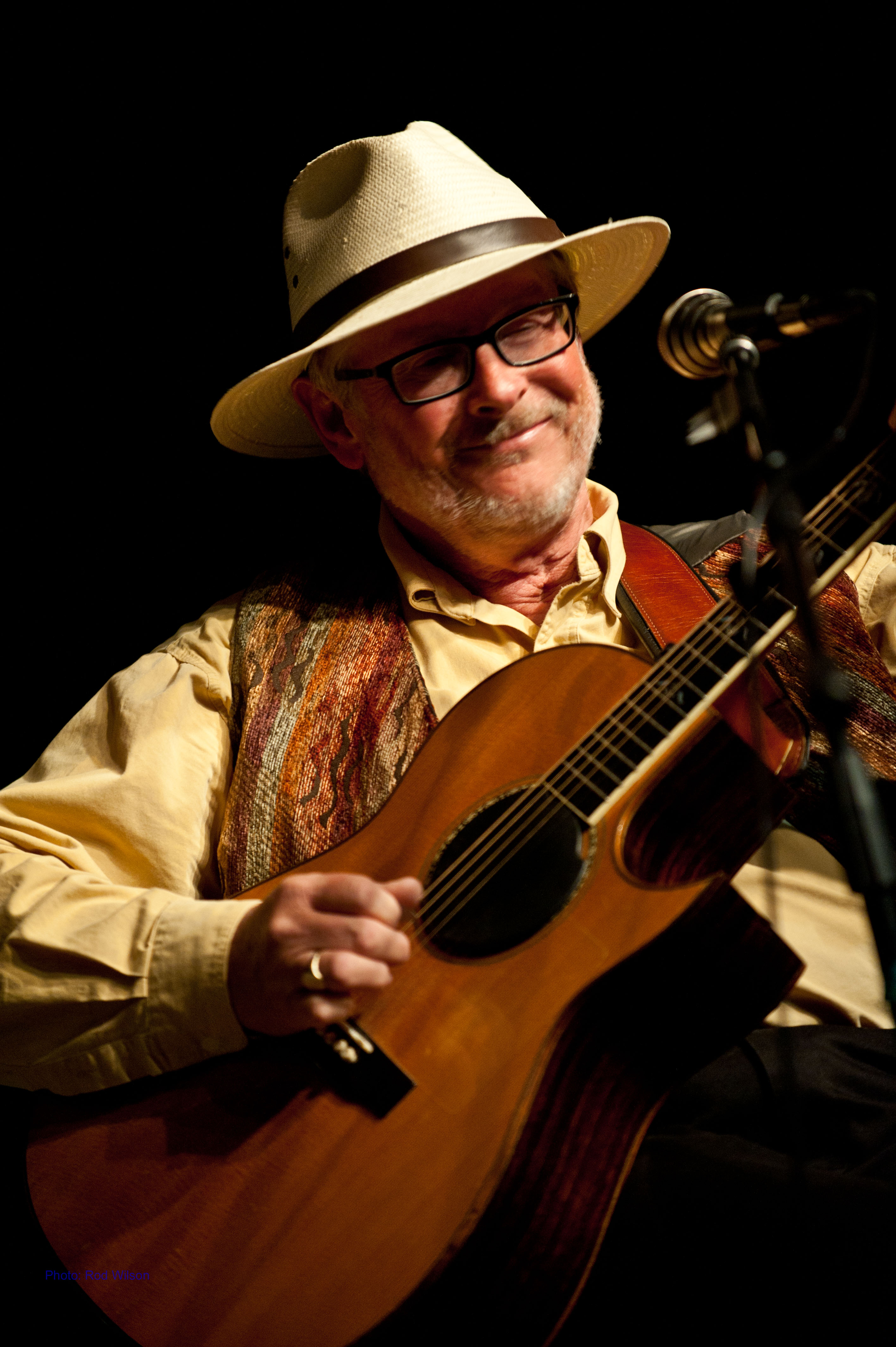
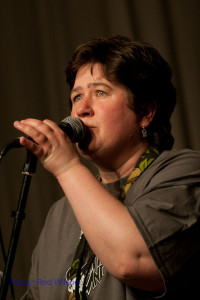
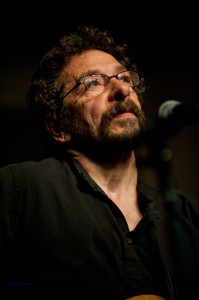
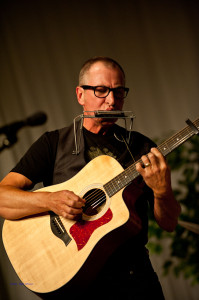
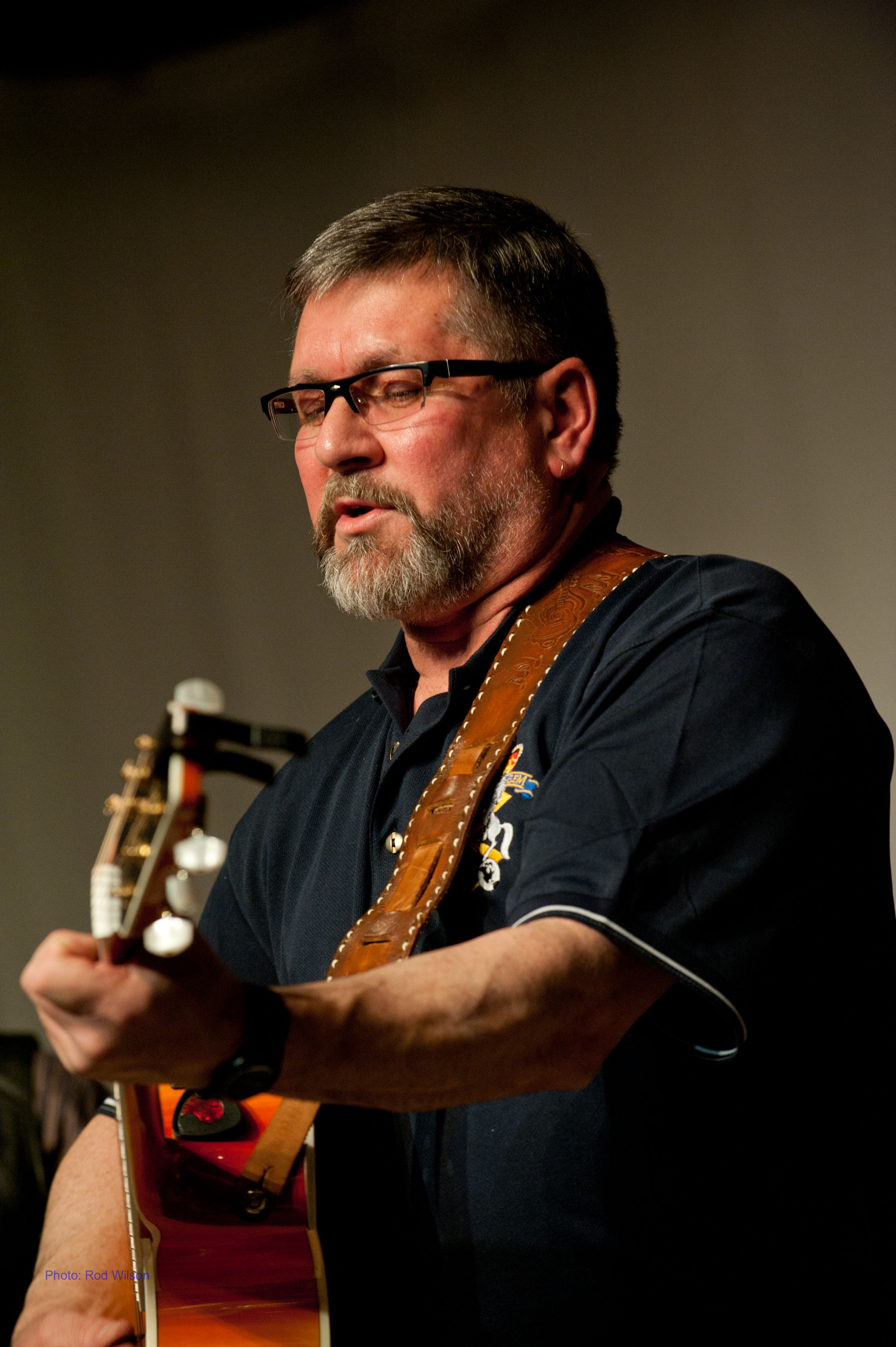
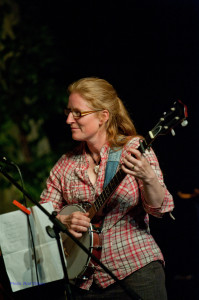
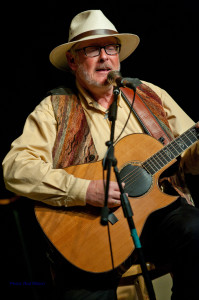
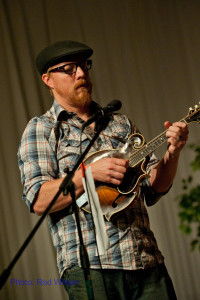
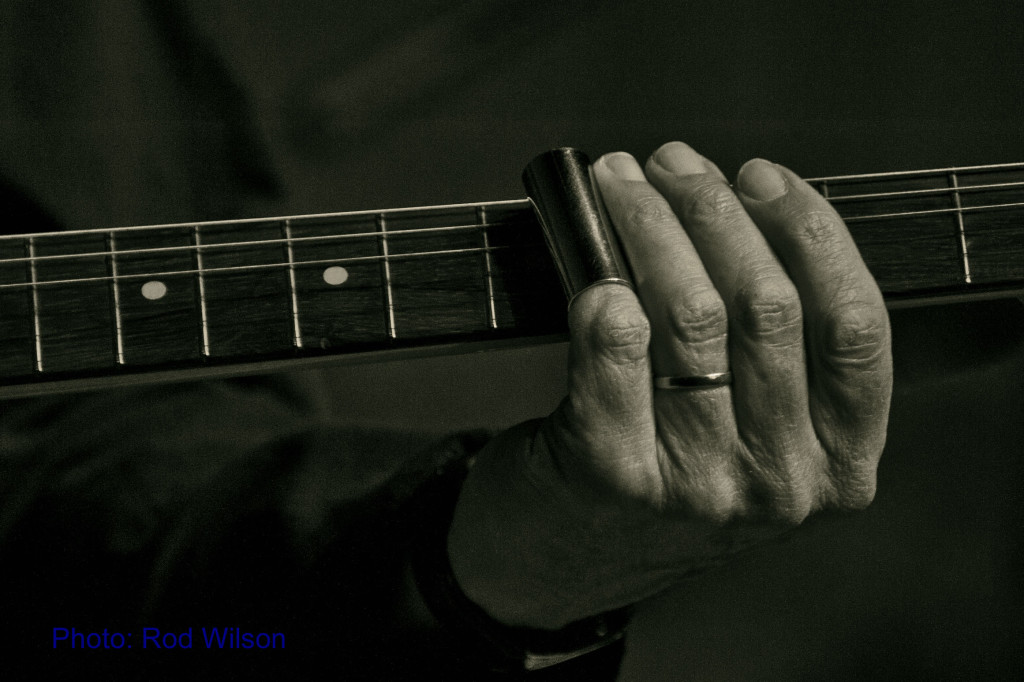
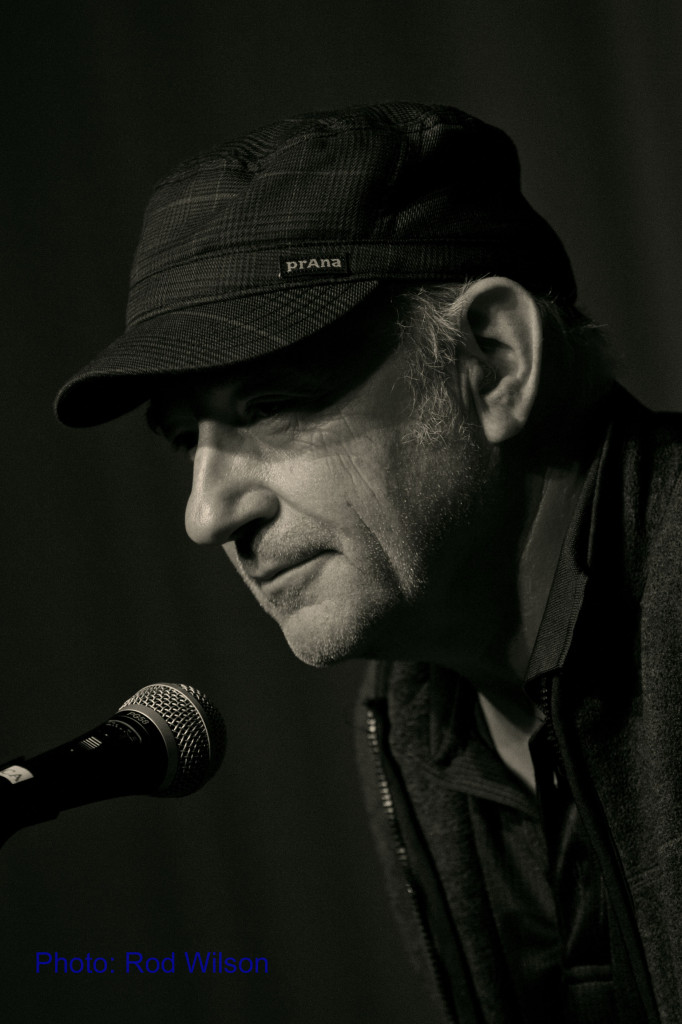
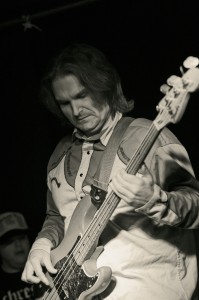

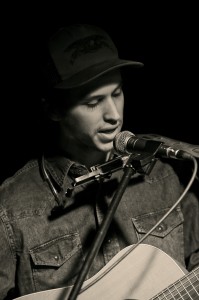
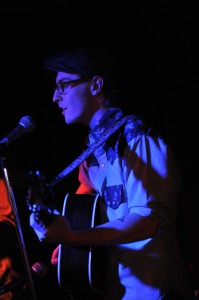
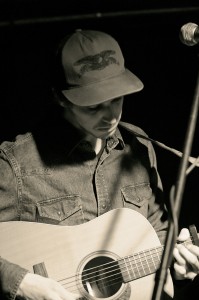
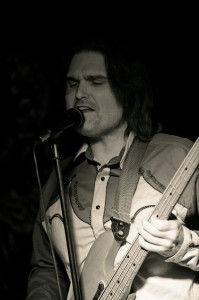
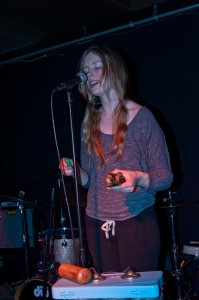
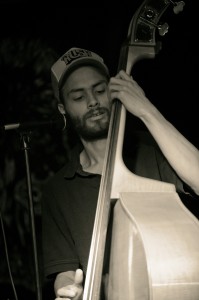
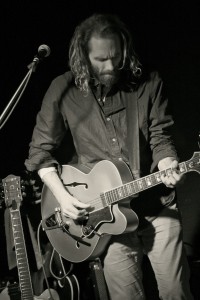
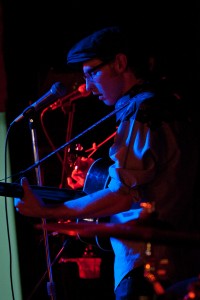
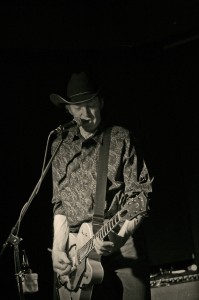
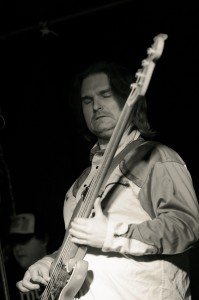
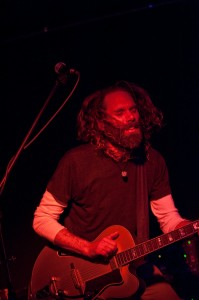
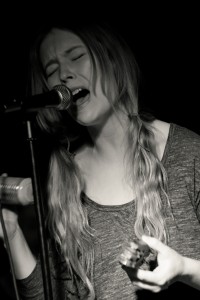
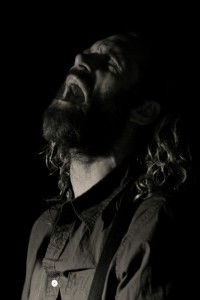
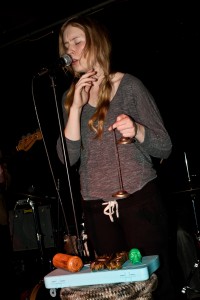
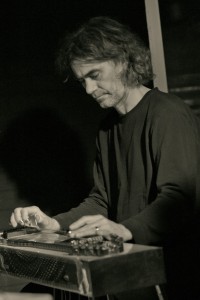
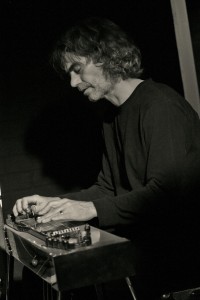
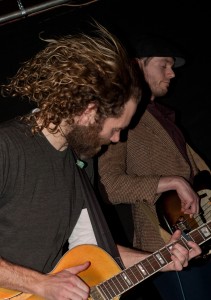

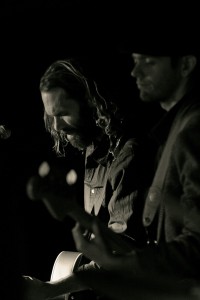
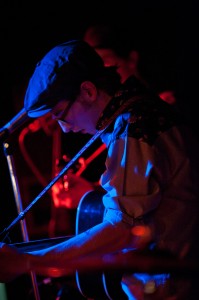
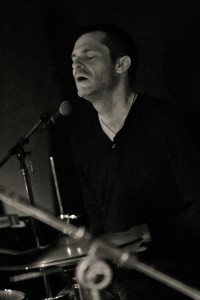
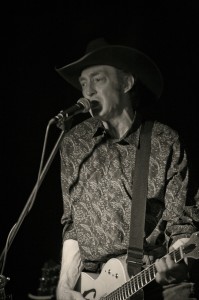
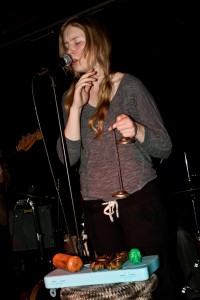
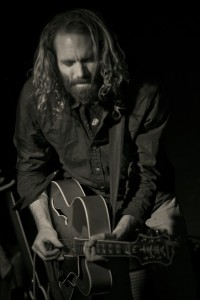
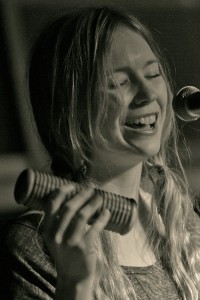
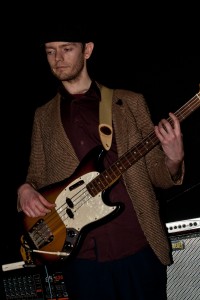
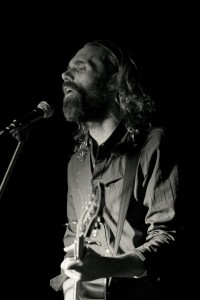
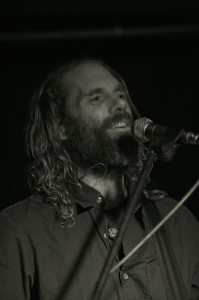
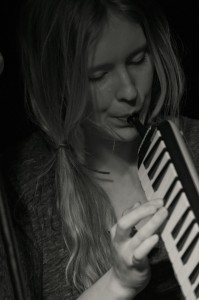
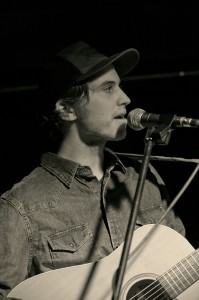

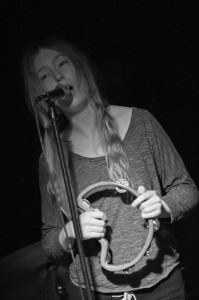
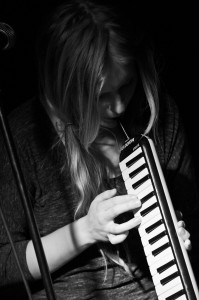
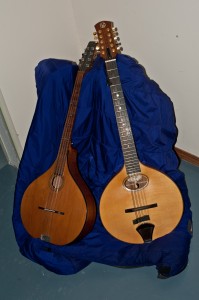
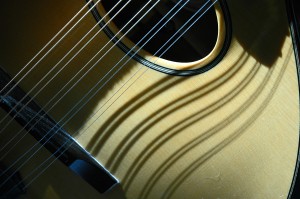
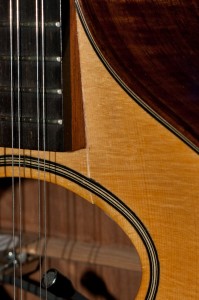
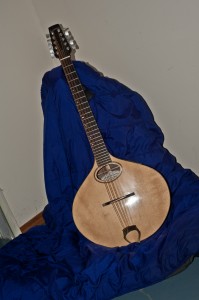 on Hornby Island (
on Hornby Island (